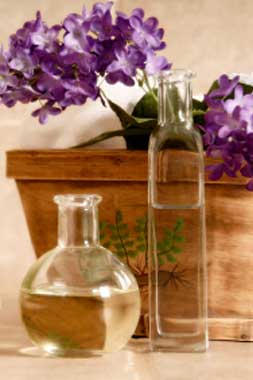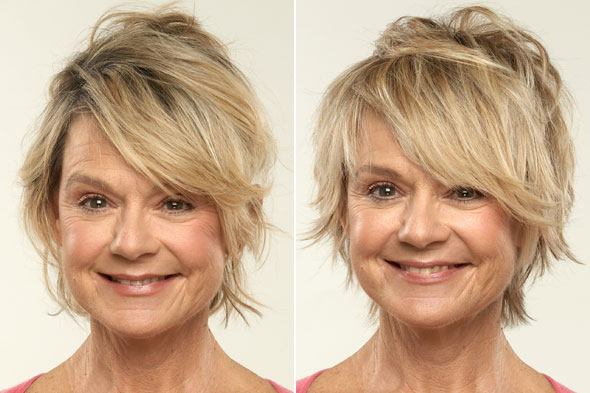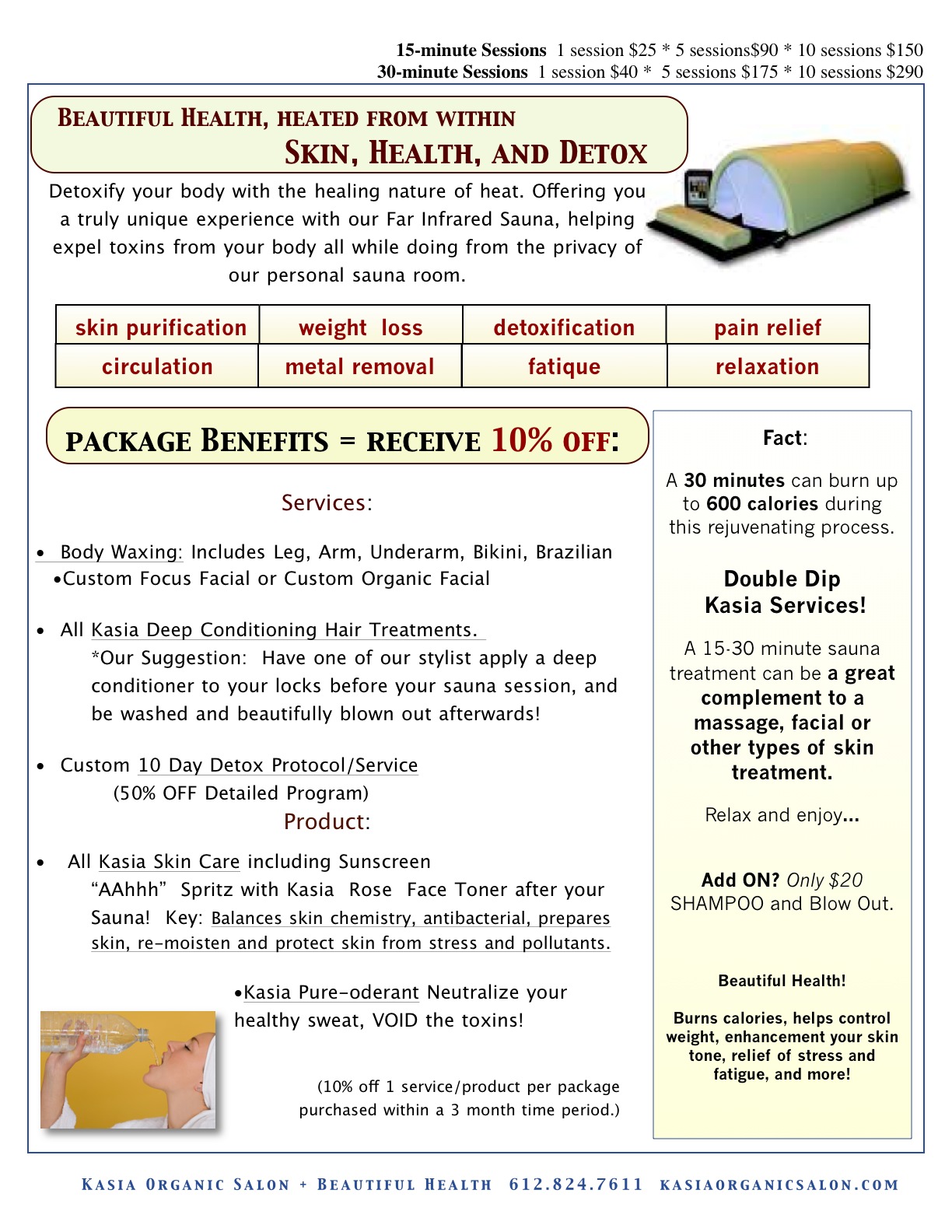Bath Salts/Salt Glow5-8 drops of essential oil or blend 1 cup of salt (dead sea or sea salt) 1 cup of epsom salt
Combine and mix the two salt mixtures together and then add the essential oils. Can be dissolved into a bath or applied to wet skin as a salt glow.
Body Lotion* 8 oz. carrier 80 drops essential oil
Mix essential oils with the carrier of your choice. You could use off-the-shelf unscented lotion, however, mineral oils & waxes found in these lotions will not permit absorption of the essential oils. Apply as you would normally apply the lotion.
Body Mist 4 oz. distilled water 30-40 drops essential oil

Mix essential oils with distilled water in a fine mist bottle sprayer. Close eyes & lightly spray the entire body until moist, not wet. Lightly towel off excess.
Body Oil* 4 oz. carrier 50 drops essential oil
Mix essential oils with the carrier of your choice. Best when used after shower or bath.
Body Wrap 30-40 drops essential oil 4 oz distilled water
Mix the essential oils into the water and shake the bottle. Spray the mixture onto a towel, body wrap or wrap of plastic. Blanket yourself with the wrap and relax for 20 minutes.
Chest Rub* 2 oz. carrier 35-50 drops essential oil
Mix essential oils with the carrier of your choice. Apply sparingly to chest.
Compress* 8 oz. carrier 10 drops essential oil
Mix essential oils with the carrier of warm water in medium bowl. Soak washcloth in solution. Gently squeeze cloth until slightly moist, not very wet. Apply cloth to area for up to 15 minutes. You may soak cloth in solution & reapply as needed.
Conditioner 8 oz. carrier 75 drops essential oil
Mix essential oils with a carrier of your own conditioner. Use as directed by the conditioners label.
Cooking 1 drop essential oil
Add oil near end of cooking process. 1 drop of essential oil equals 1 oz of the herb.
Diffuser 6-15 drops of essential oils to make a blend or 20 drops of a single note oil.
Douche pint of warm water 10-15 drops essential oil (lavender or tea tree only)
Mix essential oils with water.
Dry Brush 1-3 drops of essential oil
Apply to natural bristle brush. Brush extremities in the direction of the heart (before or after a shower or bath).
Facial Mask 3-5 drops of essential oil or blend
Add essential oils to the clay mixture and add other ingredients like honey, yogurt, avocado, etc.
Facial Mist 4 oz. distilled water 8-10 drops essential oil
Mix essential oils with distilled water in a fine mist bottle sprayer. Close eyes & lightly spray the entire face until moist, not wet. Lightly towel off excess.
Facial Oil 1 oz. carrier 5 drops essential oil
Mix essential oils with the carrier of your choice. Apply sparingly to face, avoiding eyes and mouth.
Full Bath* water filled tub 5-10 drops essential oil
Mix essential oils in a tub of warm water. Soak for no more than 30 minutes.
Foot Bath* small water filled tub 10 drops essential oil
Mix essential oils in a small tub of warm water. Soak for no more than 15 minutes.
Gargle or mouthwash 1/4 cup of water 1-2 drops essential oil
Mix essential oils with water. Gargle and spit out. Do not swallow.
Hair Care Dry Hair - Orange, Sandlewood, Palmarosa, Rosewood Oily Hair - Lemongrass, Patchouli, Clary Sage, Cypress, Cedarwood Dandruff - Sage, Geranium, Juniper, Cedarwood, Lavender, Tea Tree Hair Loss - Basil, Cedarwood, Ylang Ylang, Peppermint, Petitgrain, Rosemary Dyed Hair - 3 drops of Geranium added to bleach All types - Lavender, Roman Chamomile, Rosemary, Carrot Seed
Hair Oil 1 oz. carrier 15 drops essential oil
Mix essential oils with the carrier of your choice. Best to apply sparingly before going to bed.
Hand Bath* small water filled tub 4 drops essential oil
Mix essential oils in a small tub of warm water. Soak for no more than 15 minutes.
Household Cleaner 8 oz. carrier 100 drops essential oil
Mix essential oils with a carrier of water in a spray bottle. Use as you would any type of glass, metal or porcelain cleaning liquid. WARNING: DO NOT MIX ESSENTIAL OILS WITH ANY TYPE OF PRE-MADE CLEANING SOLUTION.
Humidifier full humidifier 5 drops essential oil
Mix essential oils with the water used in the humidifier. Use as directed by the manufacturer of the humidifier.
Hydrosols
Hydrosols can be used as a linen refreshner, room deodorizer, mouth wash, facial toner, compress, cooking, and 2 tablespoons can be added to mineral water as a cooling drink.
Inhalation 10-15 drops of essential oil or blend or 1 ml added to dead sea salt Hand diffuser or nasal suppository
Add oils to diffuser or suppository. Place under the nose and breathe in deeply 3-4 times. Repeat after 20 minutes.
Jacuzzi 3 drops per person
Add the essential oils to the water and repeat in 10-15 minutes.
Light Bulb Ring 1 ring 1 drop essential oil
Place one drop in the ring and use as directed by the manufacturer of the ring.
Massage Oil* 2 oz. carrier 20-30 drops essential oil
Mix essential oils with the carrier of your choice. Apply using standard massage techniques.
Nail Care 5 drops of essential oil (Tea Tree preferred for nail growth or anti-fungal) or 2 drops of each essential oil in a blend (Lavender, Bay Laurel, and Sandalwood preferred for dry/torn cuticles). 1/2 oz. carrier oil
Add essential oil to carrier or add blend to carrier and apply to nails.
Room Spray 4 oz. distilled water 80-100 drops essential oil
Mix essential oils with distilled water in a spray bottle. Spray room to deodorize unpleasant odors. Be careful not to spray directly onto furniture, curtains or carpets as most essential oils will stain.
Sauna 1-2 drops of essential oil per cup of water
Shake or throw on heat source as usual. Recommended oils are Eucalyptus, Tea Tree or Pine.
Shampoo 6 oz. carrier 75 drops essential oil
Mix essential oils with a carrier of unscented castile liquid soap. Otherwise, you may you an off-the-shelf shampoo. Use daily or as directed by bottle.
Soap 4 oz. carrier 10-25 drops essential oil
Mix essential oils with a carrier of unscented castile liquid soap.
Steam (inhalant) 2 cups of hot water in a bowl 3-5 drops essential oil
Mix essential oils with water. Hold head above the bowl with a towel over top head and bowl and breathe in.
Therapeutic Blend 10 ml of carrier oil 40 drops essential oil
Mix essential oils with carrier oils.
Vacuum Bag 1 bag/filter 3 drops essential oil
Put essential oils directly on the vacuum bag or filter. You may also put the oils on a cotton ball, then, place the ball inside the vacuum bag. As you run the vacuum, the heat built up inside the vacuum will release the scent into the air.
* Some blends are marked with an asterisk. The elderly, children and pregnant women should reduce the amount of essential oils by half when using these methods.







